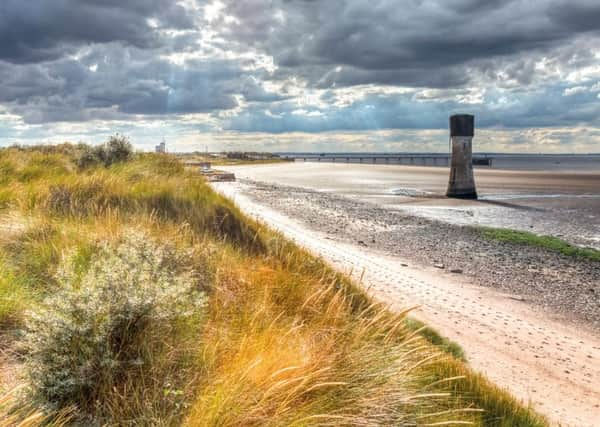Yorkshire's crooked finger of land that beckons rare birds


Now with the help of a long-awaited book, they can discover more about nearly 400 species recorded at a Yorkshire wildlife mecca over the last 70 years.
A collaboration with some of the best wildlife illustrators in the country has resulted in the 704-page Birds of Spurn which tells how many, when and where each species has been seen at Spurn Point, the isolated landmark jutting into the North Sea.
Advertisement
Hide AdAdvertisement
Hide AdThe eight-year labour of love has seen author Andy Roadhouse trawl through over a million records in the daily logs by the Spurn Bird Observatory, dating back to 1946.
Spurn has a species list bigger than anywhere else in the UK, other than St Mary’s in the Isles of Scilly, from the once-common but now rare Bewick’s Swan, to the Black-Browed Albatross – “the Holy Grail for sea watchers”.
Its position makes it one of the best places in Europe to see migrating birds pass through.
The book launch comes ahead of the Spurn Migration Festival, run by the bird observatory from September 9 to 11, which sees hundreds of enthusiasts turn up from across the world to see an amazing natural spectacle.
Advertisement
Hide AdAdvertisement
Hide AdEasterly winds mean birds passing through get pushed onto the Yorkshire coast, and as the land tapers, they are funnelled onto Spurn Point as they head south. One stand-out day on October 22, 2012, saw 10,100 fieldfares, 21,070 redwings and 2,675 bramblings on Spurn.
The book also takes a look back at the landmark’s rich history from the early birders who shot first and identified later, to the pioneers of ornithology like John Cordeaux (1831-1899) whose interest in migration put Spurn on the map. Mr Roadhouse, from Rotherham, said: “I first came to Spurn when I was 14. I spent a week here and I was hooked. Normally I spend as much time as I can here from March to June and from late July to November.
“The biggest thrill is when there’s an easterly wind blowing and rain forecast in the spring or autumn, and everyone gets excited because they don’t know what they are going to see. You can get a big fall of common migrants like redstarts and vagrants which have been blown off course from Asia or America.”
Mr Roadhouse started work on the book after being diagnosed with multiple myeloma a decade ago. He was so ill that he was in a hospice in Rotherham in January and not expected to survive.
Advertisement
Hide AdAdvertisement
Hide AdHe said: “There are very few people who have the time or effort to collate all the records, and there are very few places with records going back 70 years – with my condition I’ve had the time to do it. Doing this has been the biggest thing that has driven me for the last three years.”
Graphic designer Chris Gaughan, who worked on the book, said: “It is a remarkable feat.
“It has taken Andy eight years to write and it’s his lasting legacy – all proceeds are going to the Spurn Bird Observatory.
“It is written for a wide audience from 16 to 60: it gives a good overview to any visiting birder.”
Advertisement
Hide AdAdvertisement
Hide AdHistorian Dr Jan Crowther, who helped proof-read the book, added: “I’m very excited about the book – and particularly excited Andy has lived to see it and hold the book in his hands.”
The BBC One Show’s wildlife reporter Mike Dilger, who is the observatory’s patron, will be at this year’s Spurn Migration Festival. A programme of walks and demonstrations will run on both Saturday and Sunday.